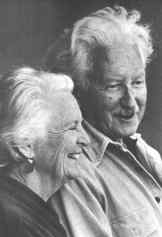
It really is amazing how many companies have done Death of a Salesman. The picture above is from Thunder River Theater Company's 2007 production. I wonder if MC will ever do this play.
Here is the company's picture of Biff's encounter with his father and his mistress.

And here is the study guide itself. The midterm will cover both Death of a Salesman (play, DVD, and videos) and Fences (play and videos). Remember that the term drama applies to the play script, not the performance and that the term theater refers to the "apparatus" of performance: director, actors, set designers & builders, costume designers, sound & lights, and audience. Have I forgotten anyone?
Also each production has a central idea. After all, in 2011, Fences means something different than it did back in the 1980s. The presence of the playwright may affect the production. Location is also important even within the US!
Here is a link to the entry with links to various scenes from Death of a Salesman:
http://worldlit2.multiply.com/journal/item/200
However, we have not watched all of these scenes in class. We will focus on the ones we have looked at (Charles S. Dutton's, Brian Dennehy's, Lee J. Cobb's). I will have to show a bit of the Oberlin version when we review for the midterm.
You might like to look at these links about Arthur Miller (1915-2005). Nayani found the first link: http://www.pbs.org/newshour/bb/entertainment/jan-june99/miller_2-10.html
Here is a link to my entry on Miller:
http://worldlit2.multiply.com/journal/item/202

Below is the link to the entry on Fences:
http://worldlit2.multiply.com/journal/item/205
For some historical background, see this link:
http://worldlit2.multiply.com/journal/item/206
The picture below is from a 2010 production of Fences at the University of North Carolina's PlayMakers Repertory Company.

Here is a picture of August Wilson (1945-2005) in front of a restaurant near the Boston University Theater where the Huntington Theater Company performs.

We will also cover the following background information.
First, here is a link to the outline of Erikson's developmental theory. The last four stages will be especially important:
http://honolulu.hawaii.edu/
By the way, Erikson's wife and collaborator Joan Erikson later stated that there was a ninth stage for those who lived past 80. Thomas Armstrong, Ph.D. adds:
In Erikson's last book on the subject, The Life Cycle Completed, his wife, Joan M. Erikson, added a "ninth stage" that applied to people who had become very old (as they had). In the book, she wrote: "Old age in one's eighties and nineties brings with it new demands, reevaluations, and daily difficulties" (The Life Cycle Completed, p. 105). According to Joan Erikson, in the ninth stage, the despair of stage eight is magnified by the experience of one's deteriorating body and mind, which results in a lowering of self-esteem and confidence. "To face down despair with faith and appropriate humility," she wrote, "is perhaps the wisest course" (The Life Cycle Completed, p. 106).

Carol Gilligan's theory of development is outlined here:
http://www.stolaf.edu/people/huff/classes/handbook/Gilligan.html
How might her theory apply to characters like Linda, Rose, Connie, or the mother in "Everyday Use"?
We talked a little about Lawrence Kohlberg's theory. I'm including this link since Gilligan developed in response to his. (She had been one of his grad students.)
http://faculty.plts.edu/gpence/html/kohlberg.htm
Moreover, his theory works so well with our plays!

I am also including links to the interview with Justin Emeka and Avery Brooks on their production of Death of a Salesman at Oberlin College. Above is a picture of Brooks as Othello. This production was at DC's own Shakespeare Theater.
We watched only parts 1 and 2, but I encourage you to watch all of this interview. When we review for the midterm, we may watch part 4 and possibly part 5.
http://www.youtube.com/watch?
http://www.youtube.com/watch?
http://www.youtube.com/watch?
http://www.youtube.com/watch?
http://www.youtube.com/watch?
http://www.youtube.com/watch?
See the link below for more information about the genre of tragedy:
http://academic.brooklyn.cuny.
OTOH, could Fences be a history play? (Shakespeare wrote tragedies and histories as well as comedies and romances.) Being a 20th century American, August Wilson would necessarily have a different approach to who could be a subject of a history play than Shakespeare would have as an Englishman of the late 16th and early 17th century.
I also hope to show some videos that are relevant to Fences.
Watch this entry for more.
Below is a picture of Erik and Joan Erikson. In addition to being his collaborator and muse, she was an artist who integrated art into occupational therapy for his psychiatric patients.

No comments:
Post a Comment